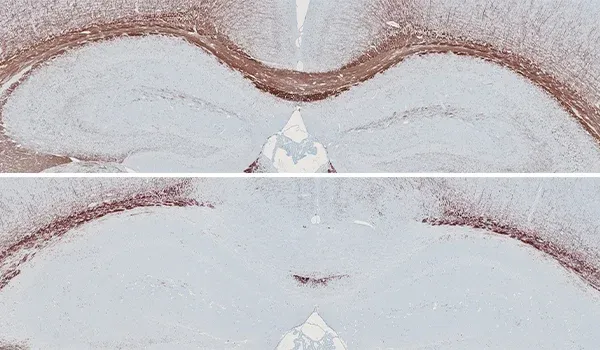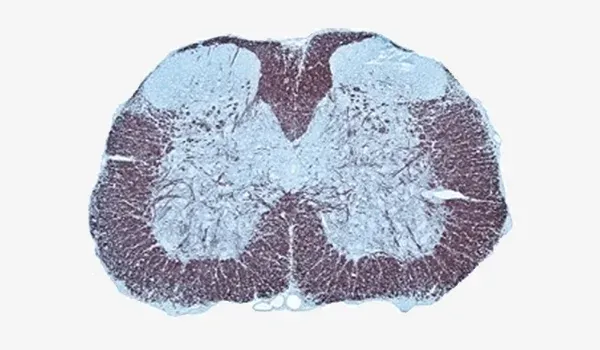Cuprizone Models
The cuprizone MS mouse model of demyelination & remyelination is induced by feeding mice the copper-chelating cuprizone toxin. Cuprizone administration in mice models several aspects of human multiple sclerosis (MS), including demyelination, spontaneous remyelination, oligodendrocyte precursor cell (OPC) proliferation & maturation, astrogliosis, and microgliosis. The pathology in this demyelination model is primarily limited to the corpus callosum with highly predictable pathology. This demyelination mouse model is well-suited to therapeutic efficacy studies.
EAE Models
Experimental Autoimmune Encephalomyelitis (EAE) is a gold-standard multiple sclerosis mouse model for assessing therapeutic agents targeting autoimmune-mediated CNS disease. The EAE induction is most commonly performed by immunizing mice against myelin-derived antigens, such as MOG, MBP, and PLP. EAE mice model several aspects of human MS. This model of multiple sclerosis is a T cell-mediated autoimmune disease with several key pathologic features, including demyelination, inflammation, microgliosis, astrogliosis, and axonal damage.
Learn more about our characterization of these MS mouse models, our validated measures, and our Preclinical Neuroscience CRO services.

